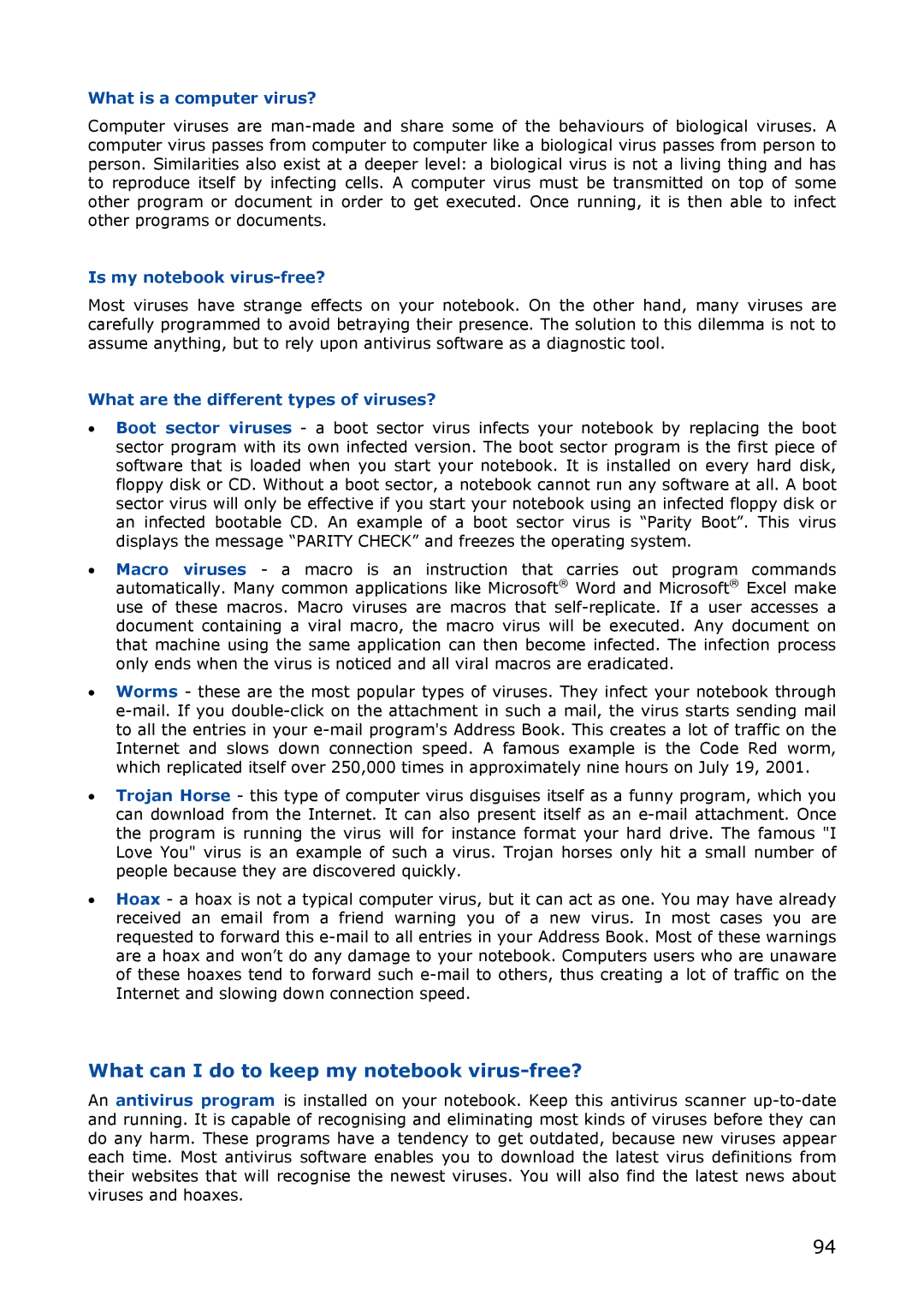What is a computer virus?
Computer viruses are
Is my notebook virus-free?
Most viruses have strange effects on your notebook. On the other hand, many viruses are carefully programmed to avoid betraying their presence. The solution to this dilemma is not to assume anything, but to rely upon antivirus software as a diagnostic tool.
What are the different types of viruses?
•Boot sector viruses - a boot sector virus infects your notebook by replacing the boot sector program with its own infected version. The boot sector program is the first piece of software that is loaded when you start your notebook. It is installed on every hard disk, floppy disk or CD. Without a boot sector, a notebook cannot run any software at all. A boot sector virus will only be effective if you start your notebook using an infected floppy disk or an infected bootable CD. An example of a boot sector virus is “Parity Boot”. This virus displays the message “PARITY CHECK” and freezes the operating system.
•Macro viruses - a macro is an instruction that carries out program commands automatically. Many common applications like Microsoft® Word and Microsoft® Excel make use of these macros. Macro viruses are macros that
•Worms - these are the most popular types of viruses. They infect your notebook through
•Trojan Horse - this type of computer virus disguises itself as a funny program, which you can download from the Internet. It can also present itself as an
•Hoax - a hoax is not a typical computer virus, but it can act as one. You may have already received an email from a friend warning you of a new virus. In most cases you are requested to forward this
What can I do to keep my notebook virus-free?
An antivirus program is installed on your notebook. Keep this antivirus scanner
94
